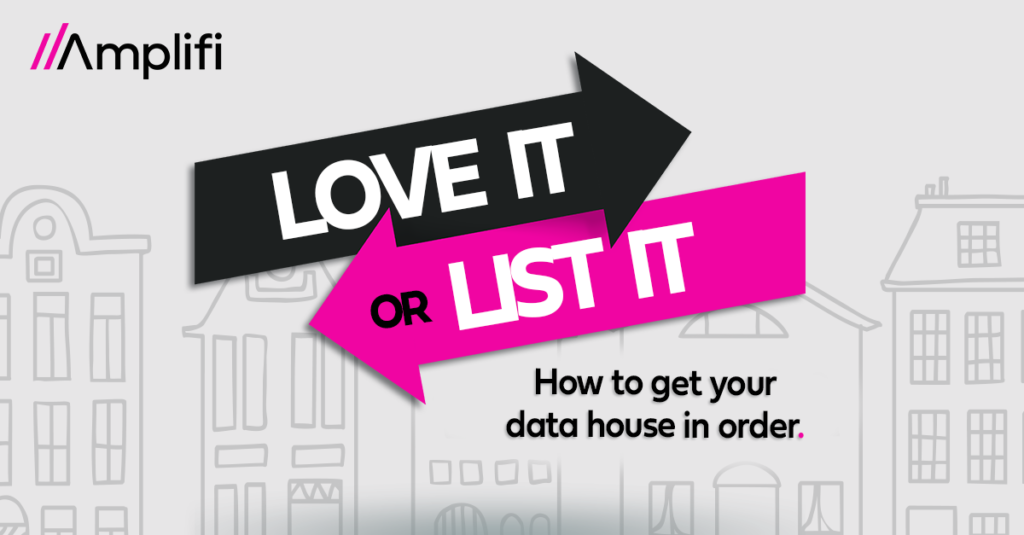Does your data need a remodel? Or maybe you’re ready to move to a new MDM or PIM? Either way, you’ll need a strong data governance framework to keep everything on track.
It’s a bit like a new home search or renovation. Any good realtor or contractor starts with a critical question: what’s your budget? Quickly followed by requirements, location, and timing.
These guardrails are critical. Without them, you’d likely lose time, waste money, and end up with a living space that doesn’t meet your needs.
Data governance works in the same way. Governing your data helps you make decisions faster and with greater confidence. With a framework in place, you can be more explorative and free your organization to work with data flexibly, rapidly, and with far less risk.
To get all these benefits, you’ll need to put the right plan, processes, and systems in place. Here are five tips based on our expertise in establishing an effective and achievable data governance strategy.
(When your data house is a mess, these three areas help the most. Read Love It or List It – How to Get Your Data House In Order)
1: Untether data governance from your technology tools.
The great thing about data governance is that it’s not tied to a system. Though technology is often an enabler, there are far more important elements that determine how successful you are at governing your data.
Designing and implementing the right operating model with roles and responsibilities, data processes, data quality controls, and business rules are all examples of governance — none of which rely on a specific piece of technology.
So, no matter what your tech stack looks like, don’t wait to focus on data governance. It’s essential to set up those guardrails at any point in your journey.
2: Try a proof of concept (POC) first.
Traditionally, organizations have avoided data governance as it’s been unfairly labeled as expensive and a drain on time and resources. One reason for the bad rep is that organizations often try to tackle all their data governance problems at once.
The best way to prove that data governance is a worthwhile investment and valuable use of time and resources is to identify a painful data challenge and run a small-scale POC. That way, rather than attempting to design and build governance for your entire organization, you can prove the model works and then scale.
For example, it will take less time to design an operating model for a single business unit or data domain, and you can select a smaller group of stakeholders from that area to test the processes. As you actively engage with the test group, you’ll gain insight into what works (and what doesn’t) — plus gain supporters who can help as you expand governance throughout your organization.
3: Establish data owners and reward their efforts.
Establishing data owners and stewards is an essential part of governance. But don’t forget that these people have day jobs, too.
It’s important to be completely clear about the responsibilities each role entails. How much time will it take each week? What are the objectives? Which tasks take priority?
Involve managers and individuals in the process, incorporating their feedback and concerns. Performance reviews should include all data governance duties and metrics, with the goal of rewarding their extra effort — even carving career routes for those with aspirations in data.
4: Make communication a top priority.
Data governance is taking on a more collaborative form. It should bring people to the table —not to disagree, but to figure out how to make things work better.
To get to this level of collaboration, you’ll need clear and constant communication. Assign a person or group dedicated to governance updates. Create shareable assets like a newsletter or dashboard to communicate achievements and milestones as your governance program progresses.
5: Measure as you go.
Data governance isn’t just about solving data quality issues. It’s about putting decision-making frameworks in place to allow for change as your business evolves. That’s why it’s critical to continually measure whether your data governance practices are on track and serving your business well.
The best way to do this is to assign targets (such as percentage complete) to new initiatives and measure them over time. And, when possible, share stories about how the initiative made a positive impact.
Measuring your progress helps flag any challenges and acts as a motivator for getting activities and initiatives completed.
Do you need MDM to improve data governance?
In our data-driven world, nearly anything a business wants to achieve depends on high-quality data. So, whether you have MDM yet or not, data governance is a critical part of getting your data house in order.
If you’re not sure where to start, Amplifi can help.
Our experts help you understand what the state of your data is today, what kind of quality controls should be placed on that data, and build out the necessary rules into a framework that you can consistently execute.
We’ll help you monitor the scores against those rules — and, when you get errors, ensure they are rectified manually or with an automated workflow.
Finally, we’ll show improvement in quality as a result of governance — equipping you with a framework so that you can re-execute the rules regularly and continually monitor your success.
To learn more, reach out to our team or download a primer on our Data Governance Services.


